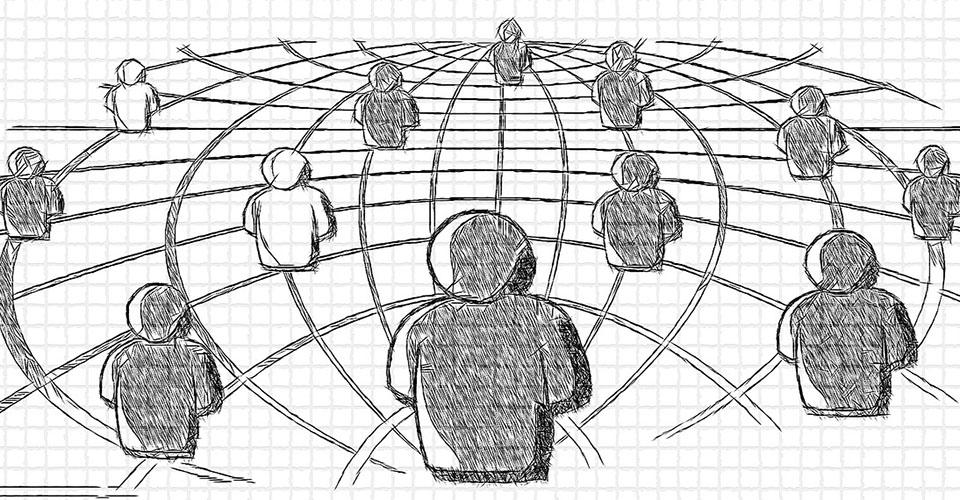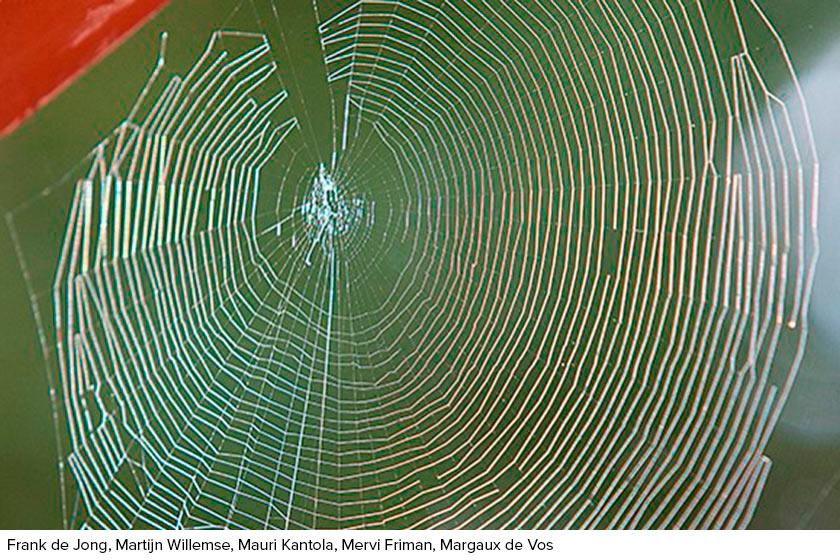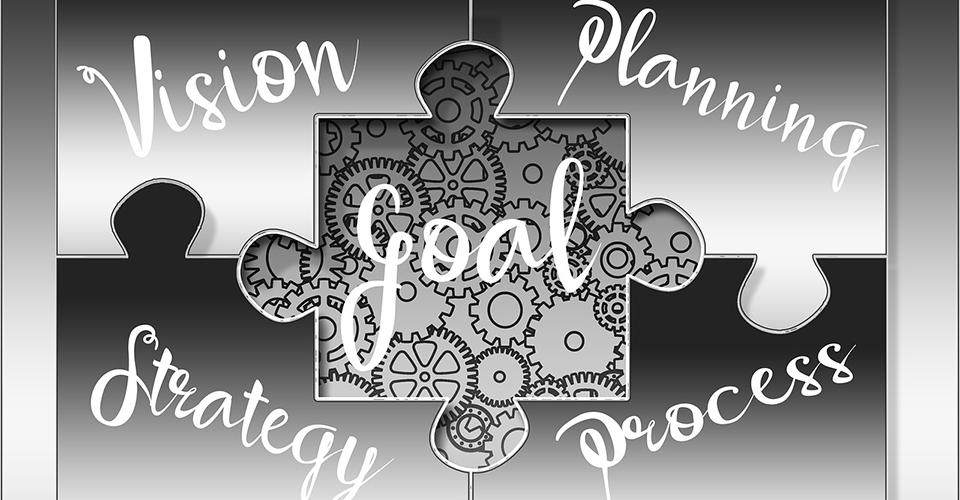
Editorial: Getting more from artificial intelligence through cooperation
Katri Kulmuni, Minister of Economic Affairs
When did you last look up information from a book, buy a travel ticket from the ticket desk, or send someone a letter? It’s probably been a while. These were everyday things when we were children, but now they seem remote. Digitalisation, artificial intelligence and the data-based information economy have shaped our society massively and continue to shape it at a staggering rate.
Changes become possibilities when one knows how to take hold of them and use the new tools available in an effective way. Finland has committed to promoting a sustainable and competitive digital economy in a humane and ethical way. For example, we want to harness artificial intelligence for the task of mitigating climate change, as part of our journey towards a carbon neutral economy.
Technological expertise has a key role in these developments. In addition, cooperation between different sectors is needed for the implementation of both services which utilise artificial intelligence and broad, society-wide operational reforms. Artificial intelligence must not simply remain as a concept which is added to different projects to make them look good or because it is assumed that it is needed in everything new. The objectives must be clear: technical improvements that make it into production, business models that bring added value to trade and industry and greater well-being for society, and different kinds of self-learning algorithms which can be used to support work tasks in different professional fields.
We need developer communities which are committed to shared objectives and which see the opportunities of artificial intelligence through the lens of a society which is healthy and environmentally sustainable. At their best, such communities give birth to whole ecosystems which bring together developers from many different fields. Developers get energy from creatively solving problems. The development work brings together expertise from the different stages of the service value chain under construction, from the technical implementation right through to the user experience.
In all this, one key group of actors are universities of applied sciences which serve as catalysts within their region. Indeed, I want to challenge all universities of applied sciences to bring together multidisciplinary developer communities from within their region of operations and to promote the rapid implementation of digital technology in the public and private sectors and the different spheres of civil society. I believe that far more can be obtained that at present through cooperation between companies and institutes of higher education.
Data-based, digital ecosystems must be bold in their approach. They must create an operating culture which supports data-sharing, joint use and integration. They must also be able to recognise whether data is reliable and be able to assess the data’s generalisability and explanatory power. For this reason, it is all the more essential for institutes of higher education to be providing workplaces with experts that have strong media literacy skills and are able to engage in critical reflection on the use of data and artificial intelligence programs as part of decision-making and in guiding their own work.
The authentic energy of a developer culture is created by bringing together people from many fields. By drawing on their expertise within their own field, they can recognise the key challenges and then find solutions for them which also make use of artificial intelligence or big data. Likewise, as cleaner solutions are being developed, for example, in the heating and transport sectors, it is essential that user-orientated thinking is integrated right from the beginning in order to support the implementation of these solutions. The utilisation of artificial intelligence requires, therefore, both technological expertise and people skills. By succeeding in the art of combining solutions from different sectors to create something new, Finland can offer also to other countries the keys to a globally sustainable future.
Are we overestimating the effect that AI will have on the labour market?
Alexander Törnroth, M.Sc. (Econ.), AI Accelerator Chief at Finland’s AI Accelerator, HQ at Teknologiateollisuus, alexander.tornroth(at)teknologiateollisuus.fi
During the past years we have seen several pessimistic predictions about artificial intelligence (AI) and the destruction of jobs that an increased adoption of these technologies will bring.
This article suggests, when the four basic rules of digital illusion, heavy capital investments, the difference between performance and competence as well as overestimating current and future AI capabilities are considered, that the predicted effects on the labour market may not be as grand and swift as technological achievements may suggest.
Key words: AI, artificial intelligence, investments, employment, digitalisation
Humans in the loupe
Katri Halonen, Dr.Soc.Sc., Lic.Ph., Principal Lecturer, Metropolia University of Applied Sciences, katri.halonen(at)metropolia.fi
Tuire Ranta-Meyer, PhD, Adjunct Professor, Director, Metropolia University of Applied Sciences, tuire.ranta-meyer(at)metropolia.fi
This is an interview of Ville Tuulos who is a software architect in the Machine Learning Infrastructure team at Netflix. He sees AI as a consultant helping us make decisions. In the process, AI can be a tool for creativity but creativity itself can not be automatized.
Key words: data analytics, machine learning, machine learning infrastructure
How to distinguish AI from pseudo-AI?
Cimmo Nurmi, Vice President at Satakunta University of Applied Sciences; Adjunct Professor of computational intelligence at the University of Turku; Entrepreneur at CI Computational Intelligence Oy, cimmo.nurmi(at)samk.fi
As the years go by, new buzzwords and industry jargon evolve and their meaning will change. Artificial Intelligence is a good epitome of this. The term AI truly emerged in the early ‘80s when the first academic AI conferences were held. The expectations were high but the results were not that convincing. The public interest soon faded. Artificial intelligence, data analytics and big data rose to public awareness again some three years ago. As an immediate consequence, a huge number of software, IoT and robotics companies changed their marketing vocabulary. Now they are all AI experts in their business area. Their web page once advertised their ERP software to support business growth. Now their artificial intelligence solutions optimally secure and guide the business growth. We should be aware of marketing jargon and carefully study the difference between (real) artificial intelligence and artificial artificial intelligence.
Key words: algorithms, artificial intelligence, computational intelligence, data analytics, education
About AI and its ethics in study and career counselling
Mikko Lampi, B. Eng., Chief Development Officer at Metatavu Oy, mikko.lampi(at)metatavu.fi
Piia-Elina Ikonen, M.H.S., Project Manager at South-Eastern Finland University of Applied Sciences, Piia-Elina.Ikonen(at)xamk.fi
This article takes a realistic but optimistic approach in discussing artificial intelligence (AI) in higher education. Finland has declared itself as a future leader in applications of AI as part of a government initiative (2017-2019) by former minister of economic affairs. A multidisciplinary dialogue is critical in understanding AI and in guiding its use and development. The impacts of AI are connected to complex and multidimensional phenomena. Moreover, there are important ethical questions regarding use and development of AI; influenced by coexisting techno-bliss and skepticism. In this article, we discuss the recent developments of AI, related ethical questions and possible future trajectories in context of higher education. There are no easy solutions and answers to provide. However, we encourage and call for discussion, research, and experiments that contribute to better understanding and perspectives in AI and its applications. Finally, we conclude by introducing two projects, in which South-Eastern Finland University of Applied Sciences is involved in exploring the possibilities of AI and its realistic applications in study and career counselling.
Key words: AI, career, guidance, education development, ethics, RDI, study guidance
AI and change in the authorship of art – impacts on the education in cultural management
Laura-Maija Hero, PhD (Ed.), Senior Lecturer in Cultural Management and Project Manager at Metropolia University of Applied Sciences, laura-maija.hero(at)metropolia.fi
Satu Lautamäki, PhD (Marketing), Principal Lecturer in Business for Creative Industries at Seinäjoki University of Applied Sciences, satu.lautamaki(at)seamk.fi
Sanna Pekkinen, Lic. Phil., Senior Lecturer in Cultural Management, Humak University of Applied Sciences, sanna.pekkinen(at)humak.fi
Oona Tikkaoja, MA (Sculpture), MA (Media&Comm.), Senior Lecturer in Cultural Management, Humak University of Applied Sciences, oona.tikkaoja(at)humak.fi
Tomas Träskman, Lic. Phil., Degree Programme Director in Cultural Management, Arcada University of Applied Sciences, tomas.traskman(at)arcada.fi
Technologies enabling and developing artificial intelligence (AI) are difficult to conceive. For creative industries, AI will offer new ways of organizing work, ways of doing and communicating creative work, tools, business models, content, as well as changing consumer behaviour. Therefore, AI is a significant trend for creative intermediaries and creates pressure to redesign the pedagogical curriculum for cultural producers.
In this article, we seek to understand the conditions of cultural management and their relation to the technology by examining art-related cases based on artificial intelligence. This analysis is part of the ESF-funded Creathon-project, which aims to strengthen technological know-how in the creative industries and to develop interfaces between the cultural and ICT sectors at universities of applied sciences. We ask: How can artificial intelligence as an ever-increasing phenomenon affect the pedagogical programme of cultural production? We can conclude that AI brings several competence development needs that should be taken into consideration while designing curricula. Cultural manager students should gain the ability to evaluate the opportunities and constraints of AI, understand the characteristics of software development processes, be trained in multidisciplinary R&D collaboration, understand IPR and copyright law and be prepared for ethics and moral communication.
Key words: AI, art, culture production, University of Applied Sciences
Artificial intelligence and screenwriting
Timo Lehti, MA (Art History), PhD Student, Senior Lecturer in Screenwriting at Metropolia University of Applied Sciences, timo.h.lehti(at)metropolia.fi
Timo Lehti, senior lecturer in screenwriting, discusses the possibilities of artificial Intelligence (AI) writing an original screenplay. There are several examples of AI making art: composing music, doing visual arts and writing short films. But what is the point of using AI in the arts? What is the added value, or problem that AI could solve for humans in screenwriting?
Key words: AI, artificial art, movies, screenplay
How to link the added value generated by AI with the society?
Matti Sarén, PhD., President/CEO, Kajaani University of Applied Sciences, matti.saren(at)kamk.fi
Artificial intelligence (AI) and machine learning (ML) are considered to be next major game-changers in the global scale. Finnish national higher-education system supports scientific research and innovation at universities, but the role of universities of applied sciences needs to be recognized more clearly for implementing scientific findings in every-day applications. In this paper the success-story of game education is reflected as a benchmark to build up a degree program education in the field of artificial intelligence and machine learning. The role and the impact of value-adding networks, systematically fostered by universities of applied sciences, are argued to be the means for integrating new technologies for the benefit of our society.
Key words: AI, diversity, network of companies, University of Applied Sciences, value chain
Will robots and bot-whisperers displace study counsellors?
Jouni Soitinaho, Principal Lecturer, Head of Master’s Degree Programme at Haaga-Helia University of Applied Sciences
Chat and chatbots are becoming increasingly applicable and successful in customer service jobs across industries. Study guidance and counselling has traditionally relied on personal contacts. The article reflects the application of a chatbot in supporting study counsellors in their routine tasks.
Key words: AI, chatbot, robot, study counsellor, study guidance
What parts of your job should be outsourced to a chatbot?
Sakari Koivunen, M.Sc., Senior Lecturer, Turku University of Applied Sciences, sakari.koivunen(at)turkuamk.fi
Dialogue and discussion can be seen as a powerful method for learning. Still, it is rarely possible for the teacher to have one-to-one discussions with students, as study groups tend to be large and schedule is tight. Chatbots are one possible solution to this problem: teachers can outsource simple discussions to bots. When asked, via a chatbot, during an online course, none of the students had previus experience of chatbots in education. The sample was small, but diverse: 16 students from 9 UASs and 3 high schools. Students felt that chatbots are a welcome addition to education and suggested several uses for bots: giving course feedback, getting feedback about assignments, general Q&A and course enrolment. Surprisingly, there is quite little academic research available on the use of chatbots in education.
Key words: chatbot, higher education, technology
How Does Artificial Intelligence (AI) Change Future Competence Demands?
Maarit Virolainen, PhD, Post-Doctoral Researcher in the Finnish Institute for Educational Research at the University of Jyväskylä, maarit.ha.virolainen(at)jyu.fi
Artificial intelligence will change the world of work and occupational profiles in the future. It will be combined with various forms of service production and industry. It may become vital even in unexpected jobs, like for a violin player of an orchestra through the co-operation with robots or utilization of software when looking for sheets related to specific tunes. In particular, the combinations of various new technologies may produce unexpected outcomes. The broad societal change is often referred to by the term Industry 4.0. It challenges educational institutions to anticipate competence demands and provide adult education to help adaptation. In the field of technology, many studies have already been completed to explore future competencies. In the article, the identified competence demands are presented and discussed to inspire the curriculum development of the Finnish UAS.
Key words: AI, Industry 4.0, skills anticipation, skills needs, technology





